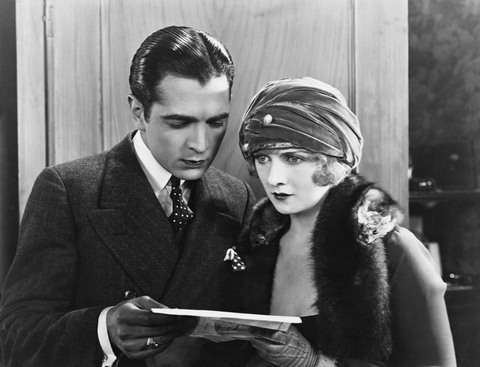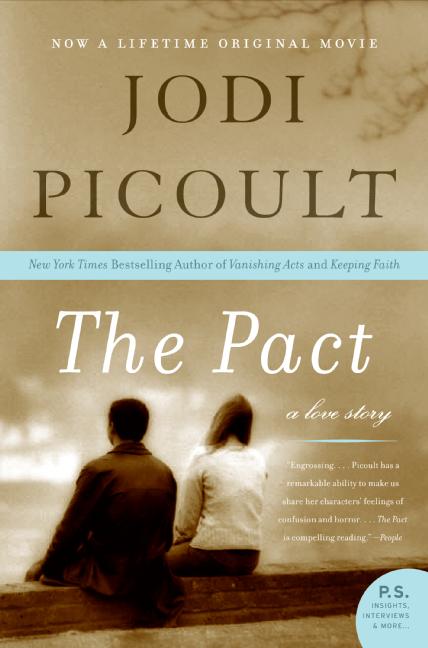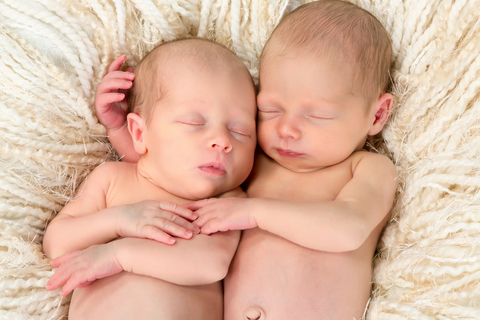“I’m  Okay if You’re Okay and My Family, Your Family, and Friends are Okay”‘
Okay if You’re Okay and My Family, Your Family, and Friends are Okay”‘
The Pact by Jodi Picoult, Part Three
**This article is not a standard review but a discussion of how the story weaves in lessons in psychology and behavior. To make sense of the following, you will need to have read Part One an Part Two.
What’s the difference between being in love and being locked in relationship dependence? In her novel, The Pact, Picoult does an excellent job of bringing to life people who are caught in that very question. The lovers at the center of the story are so caught up in relationship dependence that one of the teenagers ends up dead while in a loving embrace.
How could this have happened?
More on fusion here. As a young adult, Emily was having difficulty fulfilling her role in the ‘perfect’ couple relationship. As their coupleness is much admired and expected, Emily feels terrible and as if she has failed. Christopher had no problem going from best friends to lovers, but Emily had trouble with the transition. She does not enjoy the sexual part of their relationship but can’t bear to tell Christopher or anyone else that she is not attracted to him romantically. While she professes love and that Christopher is her one and only, in truth Emily is trying to find a way to redefine the relationship, a way to have room for her to be herself instead of spending her energy trying to keep Christopher and their parents calm.
And all might have been worked through had not something happened to push the young people even closer together. Just when Emily is ready to step up and tell Christopher and everyone else the truth, she discovers she is pregnant. Though the families do not know, Christopher and Emily assume correctly that while the parents would be startled, they’d glad about the first grandchild on the way. Their position would be that Christopher and Emily would get married now instead of later.
Christopher is thrilled with the pregnancy. Emily is horrified. No one is to blame, but Emily knows at a deep emotional level that the future functioning of Christopher and of both families is tied to what she decides about the baby. She is deeply depressed but keeps her depression hidden as the truth simply doesn’t make any sense in the midst of the cameo lovely families. Emily doesn’t understand why she feels so hopeless and lost when her life has been so fortunate and everyone around seems happy. After all, she has the parents and boyfriend envied by all who know her.
 The question becomes, how do the young lovers’ increased ability to distinguish between thoughts of their and thoughts and actions which are the result of efforts to keep the needed person calm and approving, result in a suicide pact?
The question becomes, how do the young lovers’ increased ability to distinguish between thoughts of their and thoughts and actions which are the result of efforts to keep the needed person calm and approving, result in a suicide pact?
Emily realizes she’s not the perfect reflection of expectation and she attempts to make a little space for her as a separate person, to be ‘Emily’ and not just half of Christopher and Emily. It’s at this point that Emily learns she is pregnant.
Emily doesn’t want to marry Christopher. She doesn’t want to have a baby. She doesn’t want even one more day of her life. Emily works to bring Christopher close to her, to have him understand what she needs. Emily’s revelation of her true feelings result in Christopher losing himself and his own ability to think beyond his ‘fusion’ with Emily. He fervently disagrees with Emily’s suicide plan. It’s the worst idea he can imagine. He knows what he thinks and what he stands for and is able to ‘hold his own’ for a while.
Christopher and Emily are faced with the dilemma of transitioning from best ‘kid’ friends to lovers—without disturbing the balance in the families. The criteria that go into a close friendship are different than the criteria for a romantic relationship, especially one that’s supposed to be lifelong But eventually he is unable to separate what Emily wants from what he wants. Christopher shoots the girl he loves because he loves her. Or is it because in their closeness—Christopher lost touch with everything he knew to be true about how to live in the world? Turns out the gun was lodged between two people who’d lost the ability to think beyond twenty-four hours?
What happens if one person or both people (or an entire family) in a relationship are afraid to do anything that has the possibility of upsetting the emotional balance?
More on what happens in relationships when anxiety increases in a relationship.
The factor that forces couples to face a greater commitment and closeness is pregnancy. Emily is caught. She sees no exit and in her heart believes she’s doing the right thing for all concerned. She even talks Christopher into ‘helping’ her? So was her death a suicide or a murder?
Fusion can make any of us do things we wouldn’t consider from our on beliefs or ideas when our desire to keep the other calm is greater than our desire to live out of our own inner core. This is the process behind cults and behind when we say “yes” and mean “no” and when we say “no” and we mean “yes.” Picoult’s book is a worthy read for anyone wanting to gain a powerful insight into the fusion process. Emily killed herself rather than reveal her own thoughts and wants. Christopher helped her when he couldn’t stick by what he believed about life, death, and love.





